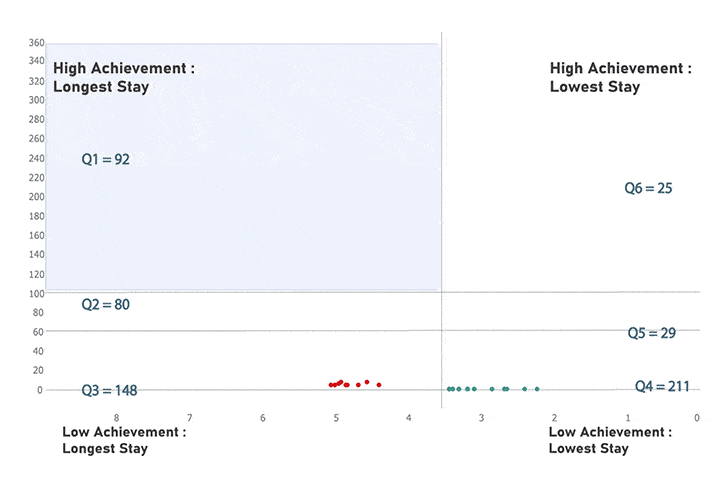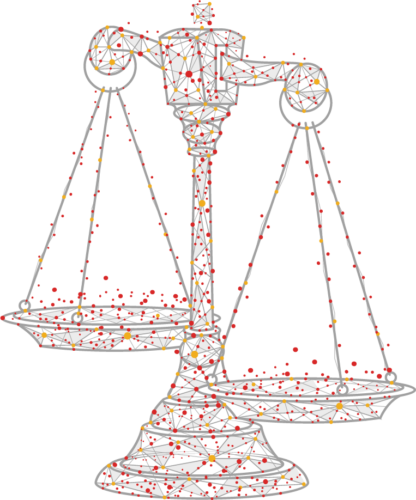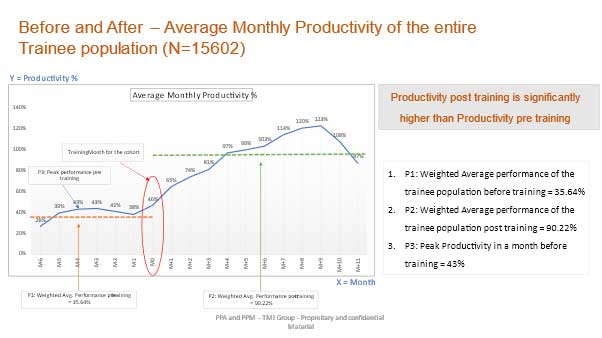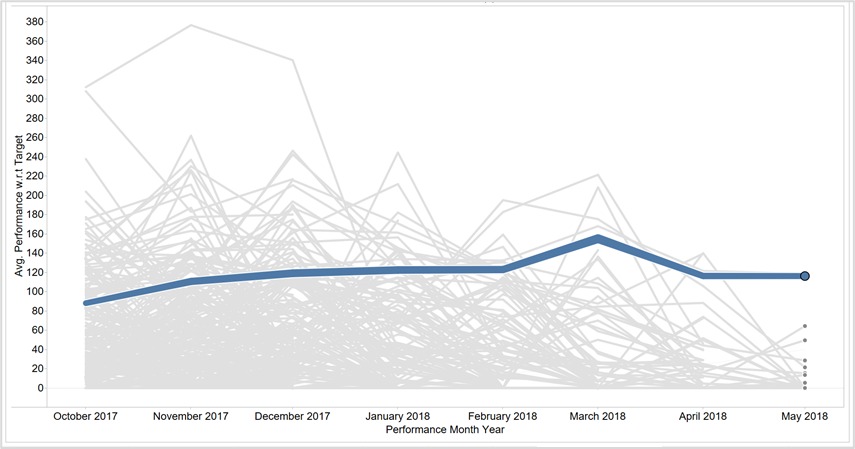People Performance must be designed in the context of current challenges – work automation, gig workforce, work from home, and Gen Z workforce. And, most importantly it must be done from PERFORMANCE DATA. Only then it can be delivered and an organization can enhance the productivity of low performers.
“In our experience, ONLY 1 in 5 FLEM employees are top performers with high residency (Duration of time in the role). The low productivity of the remaining 4 is the biggest hidden cost of Human Resources.”
TMI Group has in place a one-of-its-kind Measurement, Analytics, and Modelling process. People Performance Consulting facilitates the organization to identify the cause of low performance and fit it accordingly. The process includes special steps to improve people’s productivity at the micro-level.


People’s Performance is dependent on many factors related to the employee, organization, and the industry. However, only a small set of factors account for the bulk of the performance variation and therefore must be scientifically identified. Our strategic Analytics models let you discover the factors affecting performance.
“Analyzing performance with readily available data is like discovering the tip of the iceberg. What it reveals is interesting but what it conceals is significant.”
This graph provides insight into when a person should be sent for induction training and how long does the performance benefit last. On entering your key data within this new framework, you get a direct insight into the factors influencing People’s Performance.


You need a performance model to discover the root cause of the under-performance of each employee which varies from time to time and geography to geography. PPM is complex because People Performance is determined by many factors. They might be internal to the employee, internal to the organization, or external to the organization. It requires competencies in data sciences in addition to deep insights into human behavior. Data Analysis must be based on “What we don’t see” in addition to “What we see”. It must be based on data patterns and complex data visualization.
“Every employee marches to a different drummer when it comes to his or her performance. So, the truth is often in the ‘drilled-down’ data.”
Can you predict performance with scientific performance models?
The aggregate data (the Blue line) hides the under-performance of several employees and masks the chaotic performance patterns of most employees. By plotting your company data in this new model, we identify the key factors affecting People Performance and hence provide you with solutions.
